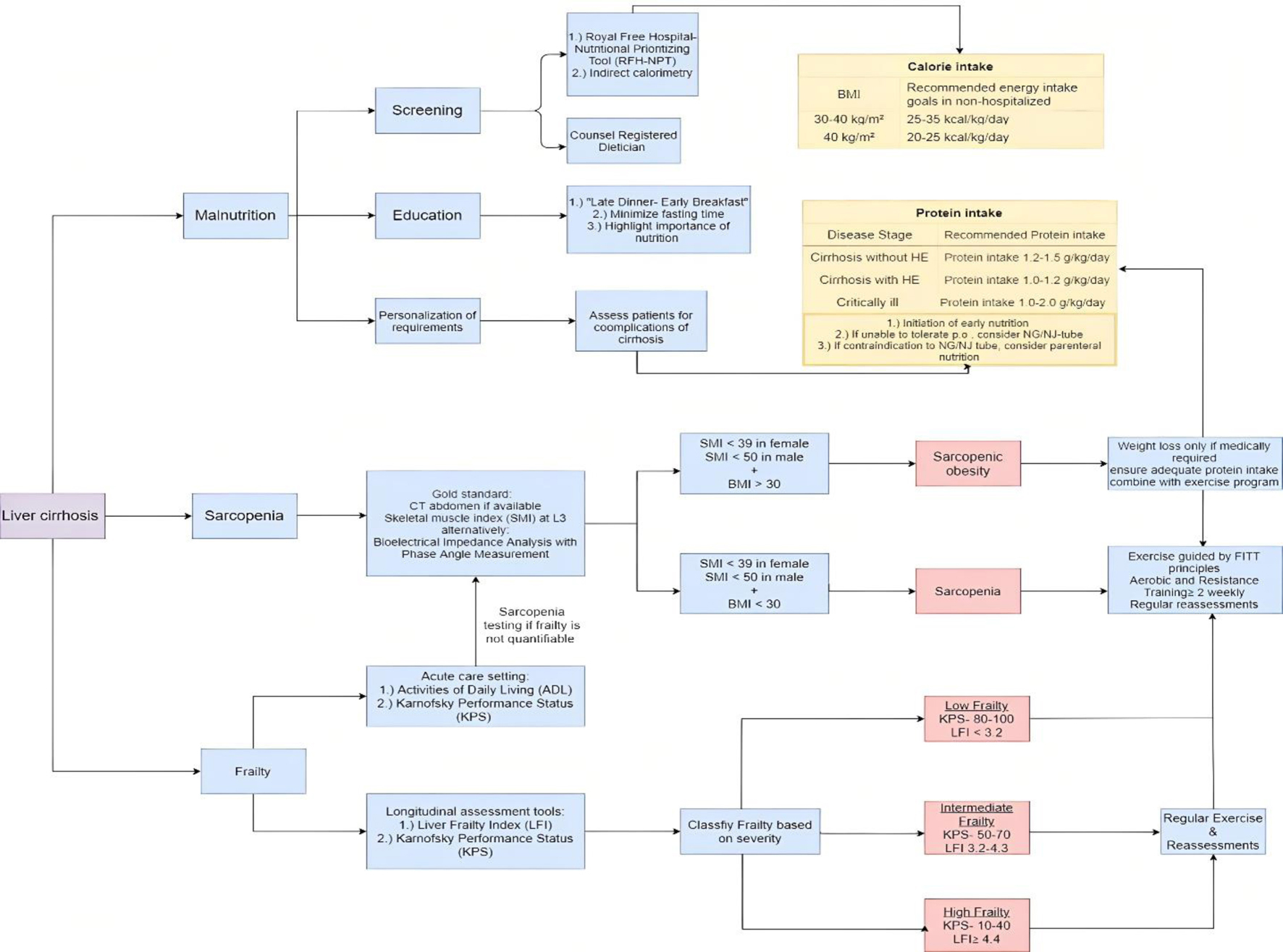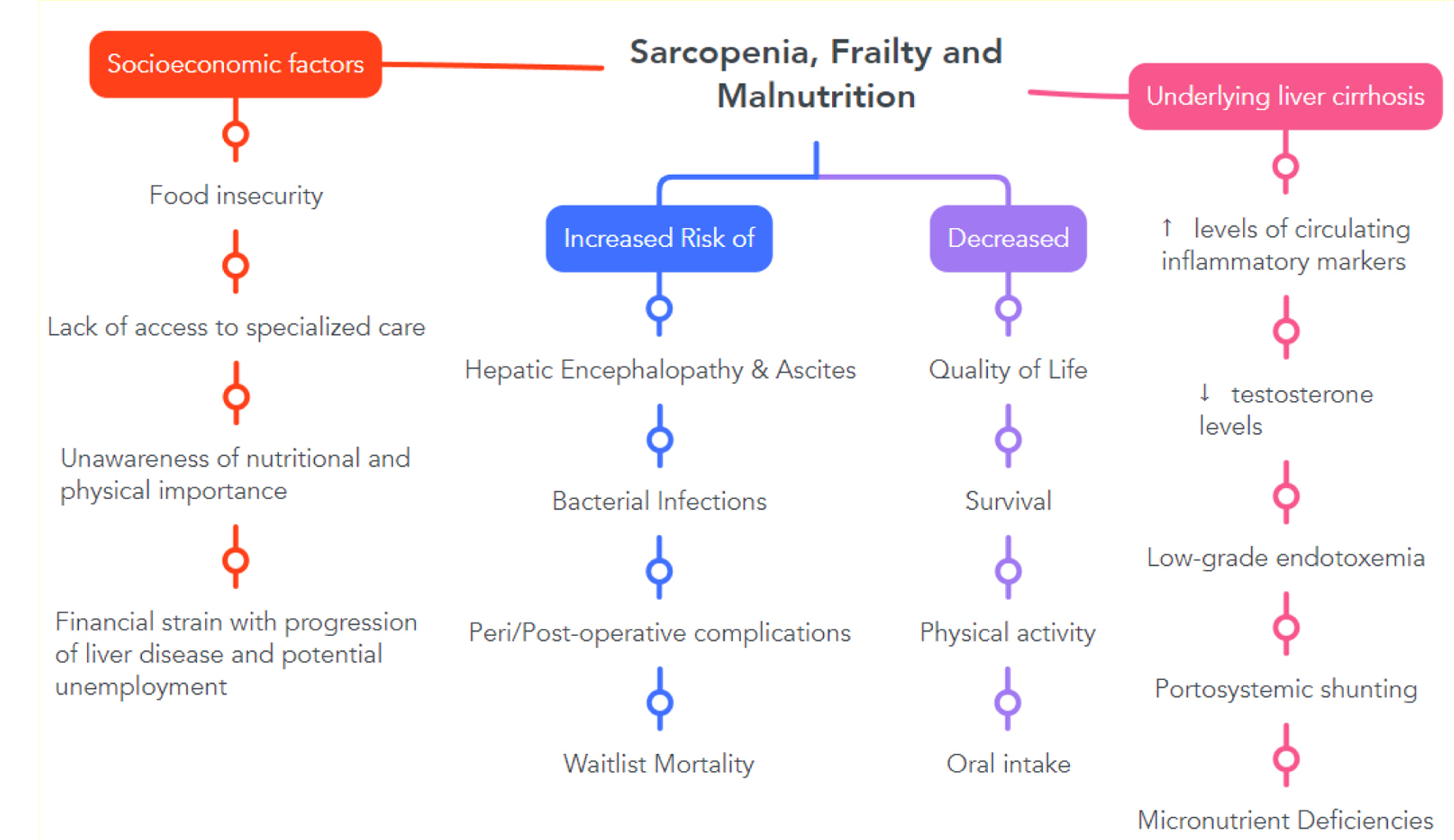
Figure 1. Algorithm in the assessment of sarcopenia, frailty, and malnutrition. This algorithm highlights the essential steps in assessing frailty, sarcopenia, and malnutrition in patients with liver cirrhosis. This flowchart illustrates only a selection of available assessment tools. We recommend regularly using the same tools to increase the likelihood of noticing subtle changes. Regular assessments are based on the patient’s clinical status and should be conducted at least annually. In case of decompensation or clinical deterioration, periodic reviews should be performed every 3 to 6 months in ambulatory clinics. For nutritional purposes, use dry weight-based body mass index and subtract weight depending on the amount of volume overload.
